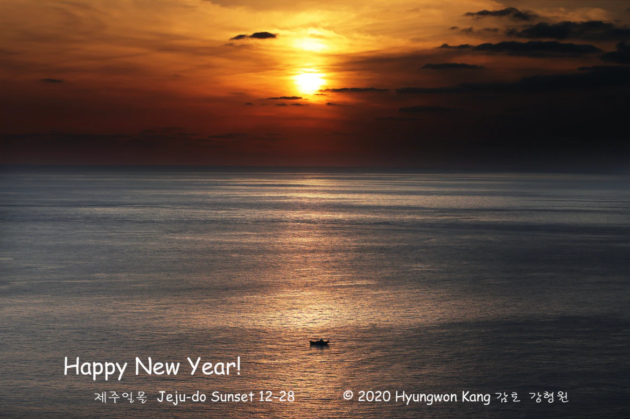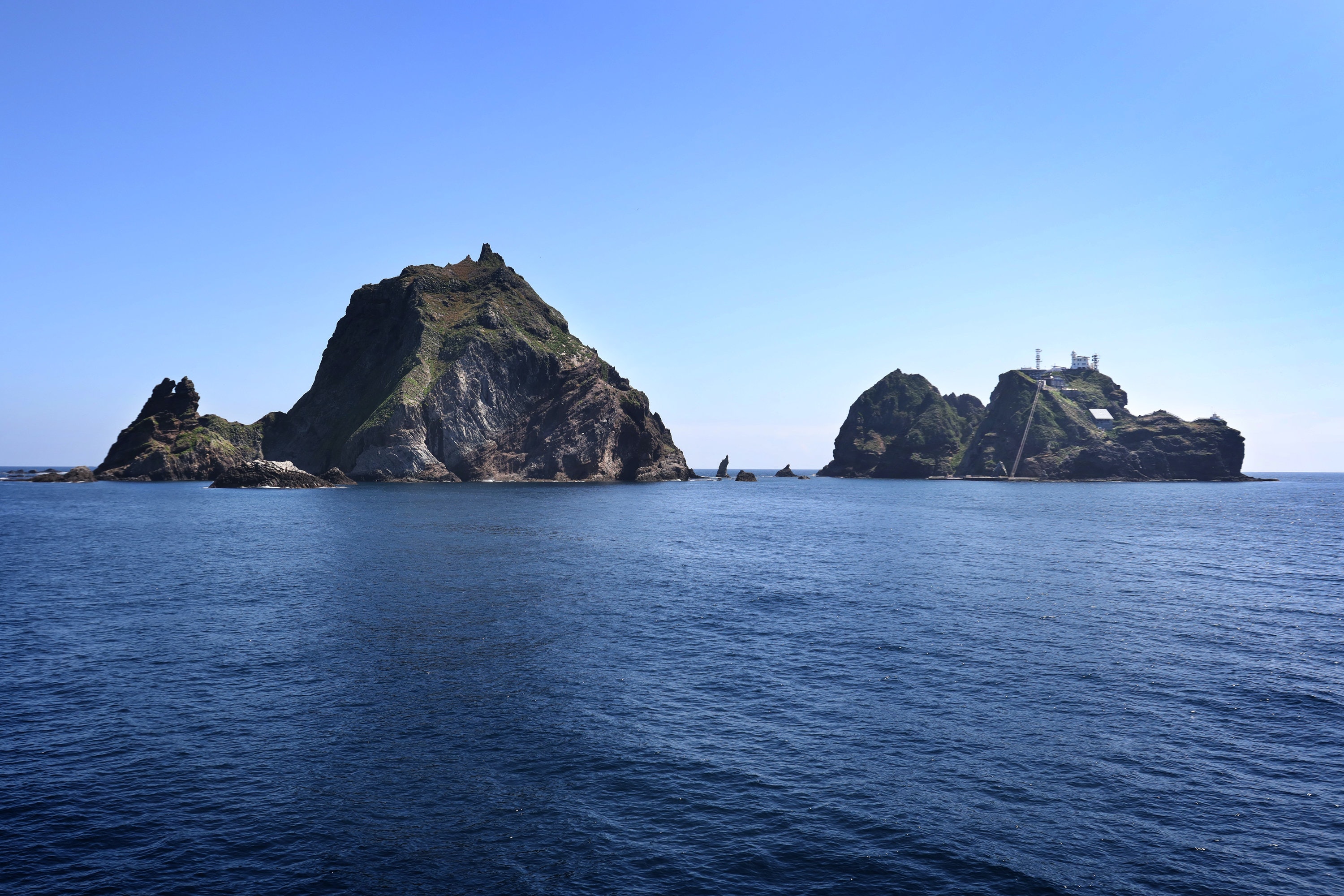
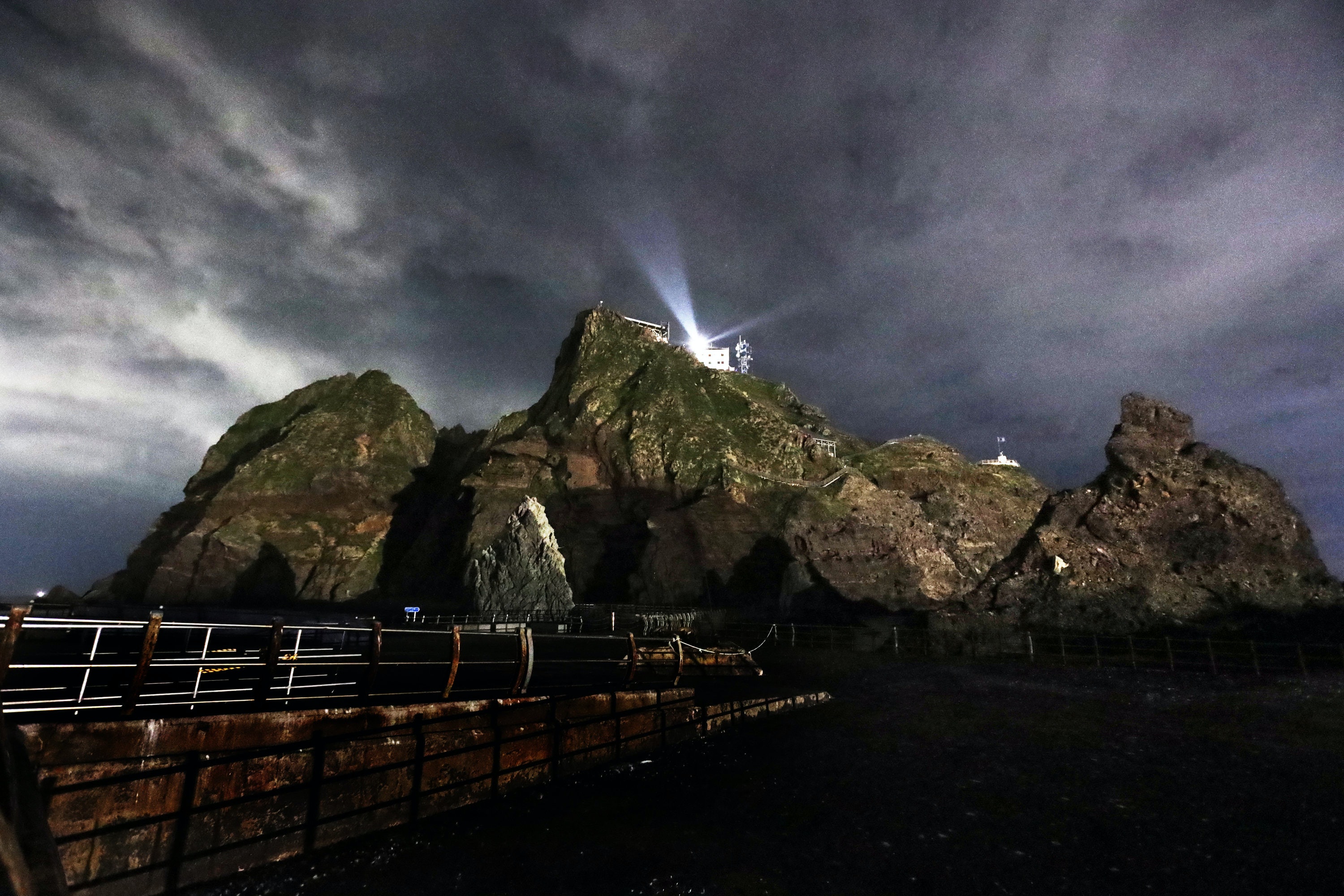
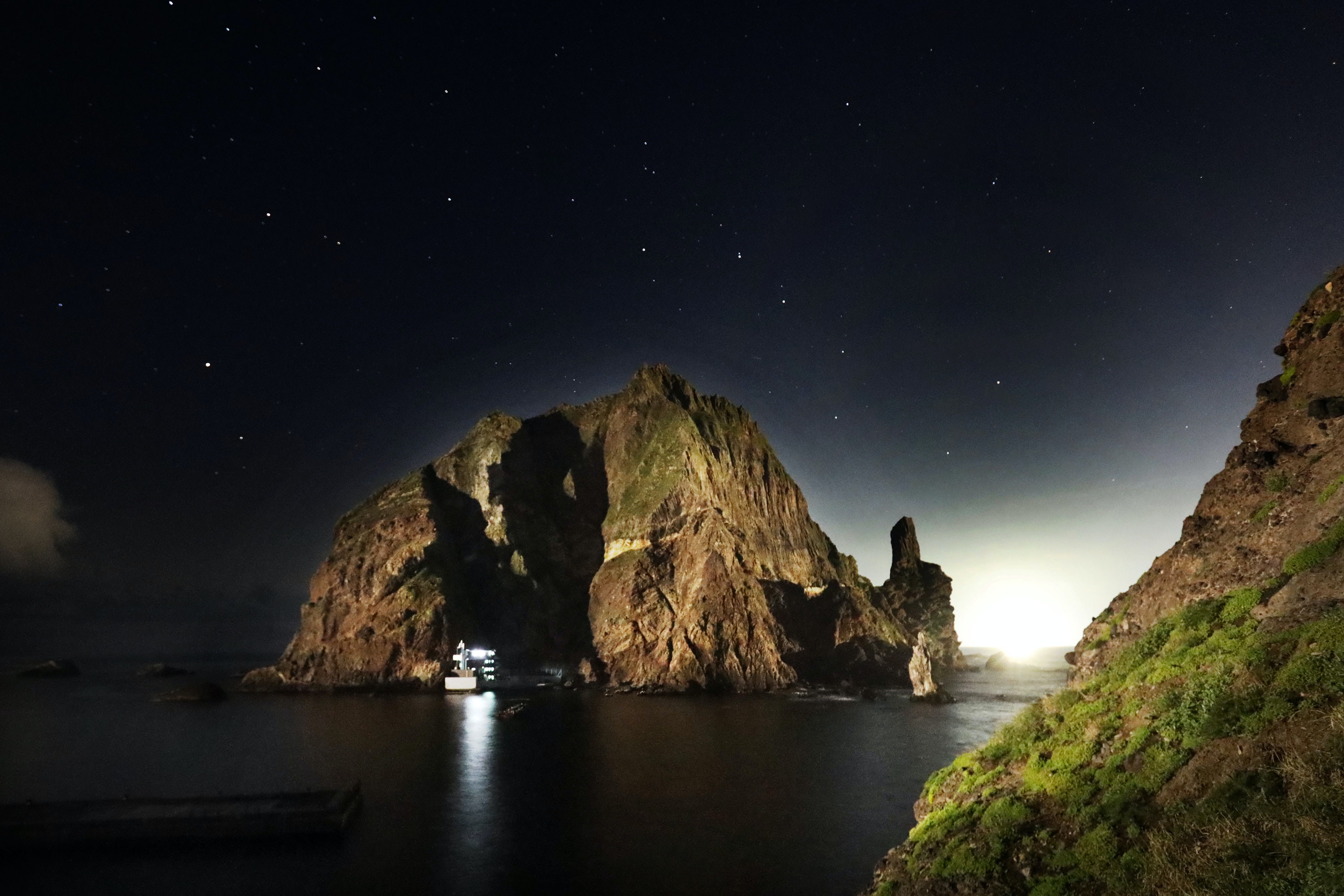
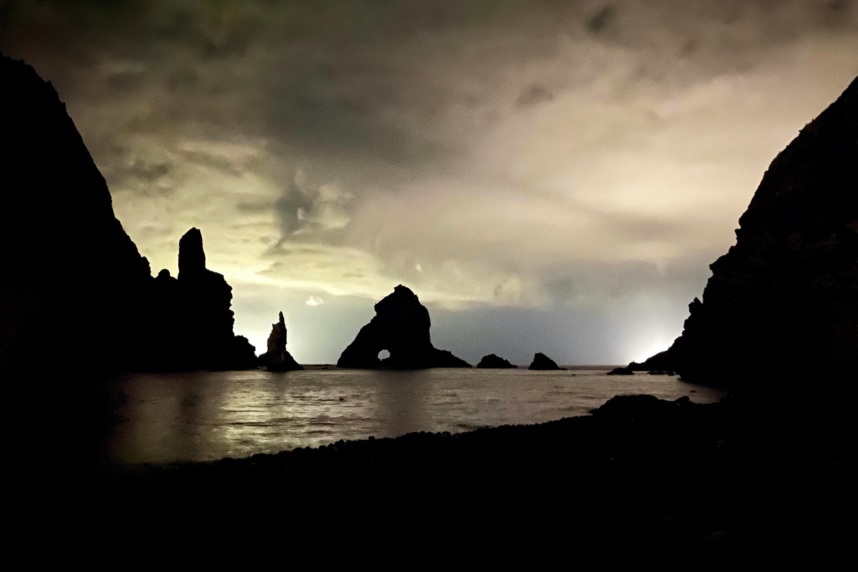
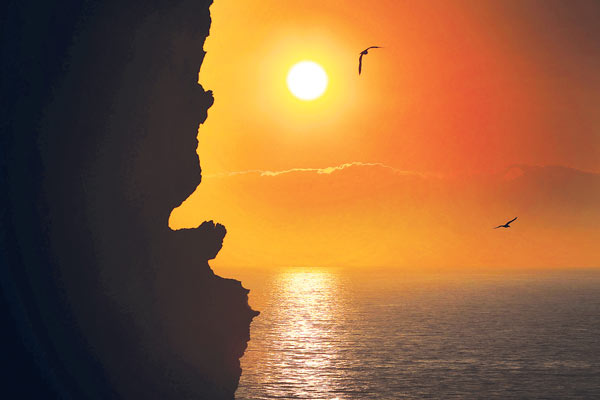
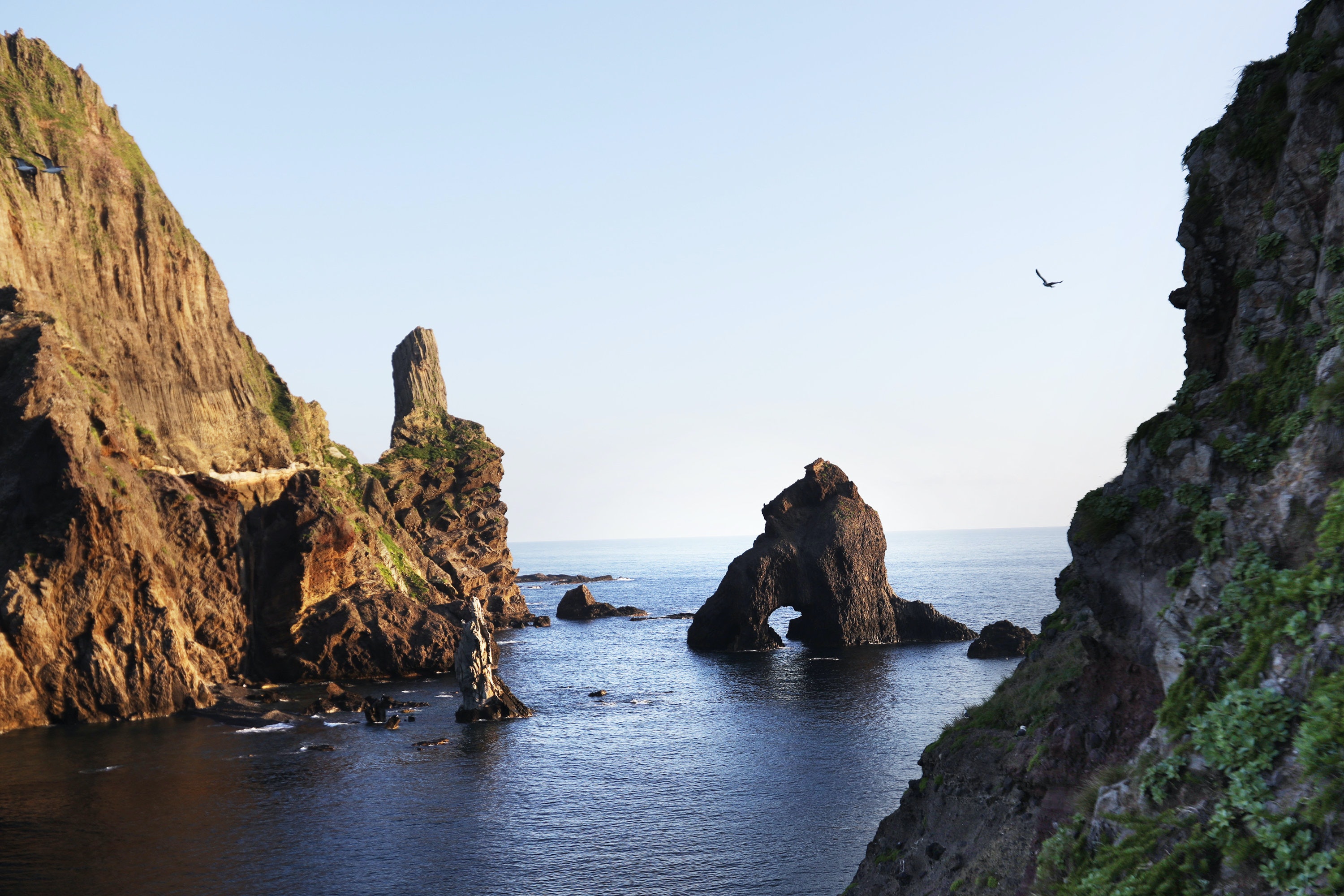
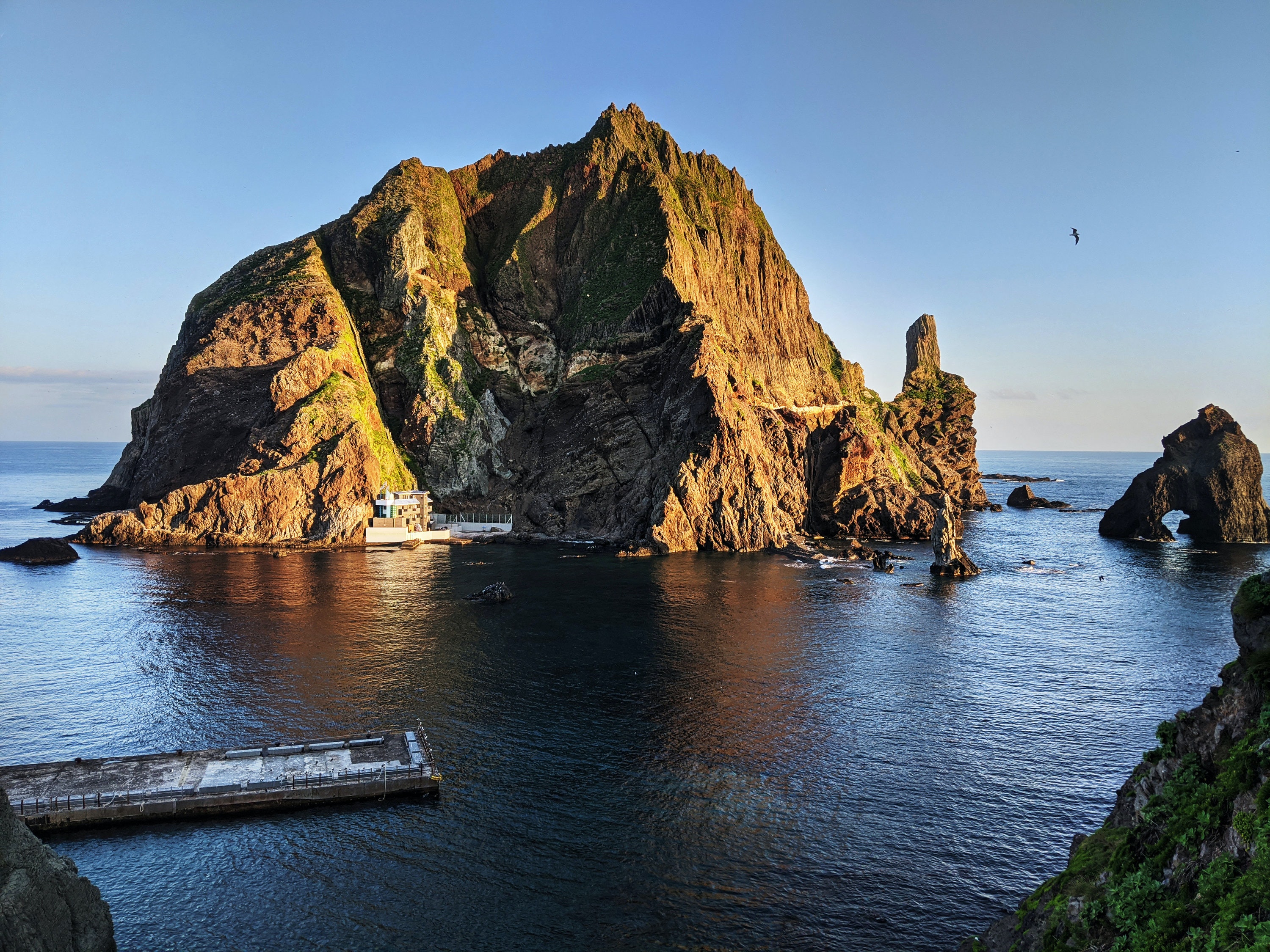
독도는 우리 현대사에서 항상 최전방에 위치해 많은 아픔을 안고 있는 섬이다.
울릉도에서 87.4km(54마일) 떨어져 동해바다에 우뚝 솟아 있는 독도는 정확하게는 천연기념물 제336호로, 현재 경상북도 독도경비대 경찰이 지키고 있는 울릉군 관할의 우리 영토이자 독도천연보호구역이다.
독도는 동도(해발 98.6m)와 서도(해발168.5m)를 중심으로 총 89개의 크고 작은 섬으로 이루어져 있다. 약 460~250만 년 전에 형성된 화산섬으로, 주변 평균 수심이 2,000미터에 달하는 해양 평원에 솟아 있는 (해상) 산이다.
1905년 러일 전쟁 승리 후 일본의 첫 번째 점령지가 독도와 울릉도였다. 울릉도 주민들의 증언에 의하면 동해바다의 혹한 기후 속에서 수많은 세월을 견디며 성장한 진귀한 향나무들을 포함한 수많은 고급목재용 거목들이 일제강점기에 벌목되어 섬에서 영원히 없어졌다.
독도 주변 해역에서 많이 서식하던 ‘강치’는 동해 연안에서 번식한 유일한 물개과 동물이었으나 20세기 초반부터 일본 어선들의 무자비한 포획으로 멸종되었다.
독도 주변은 훌륭한 어장으로 지금도 많은 어선들이 밤낮으로 조업하는 구역인데, 1948년 6월8일에는 독도에서 조업하던 우리 어선들이 미군의 폭격기들의 공격을 받아 공식적으로 16명이 사망(실제 사망은 150~200명 추정)하는 사건이 있었다.
아직까지도 구체적인 진상조사 결과가 공개되지 않고 있지만, 독도에는 ‘독도조난어민위령비’가 있어 그들의 희생을 기억한다.
IT 강국인 한국의 명성에 걸맞게 동해바다 해상과 독도에서도 휴대폰(LTE) 신호 연결이 매우 양호하다.
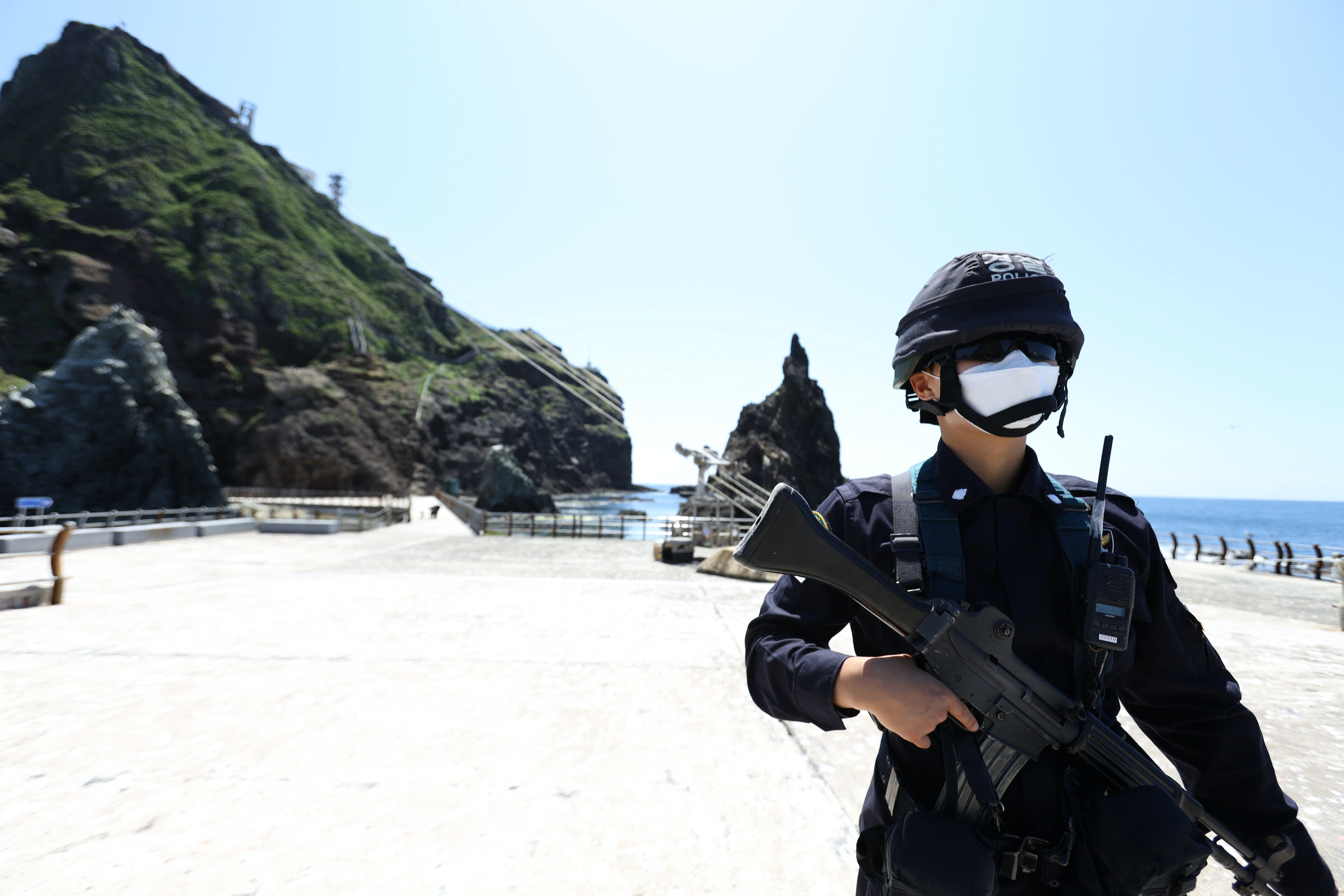
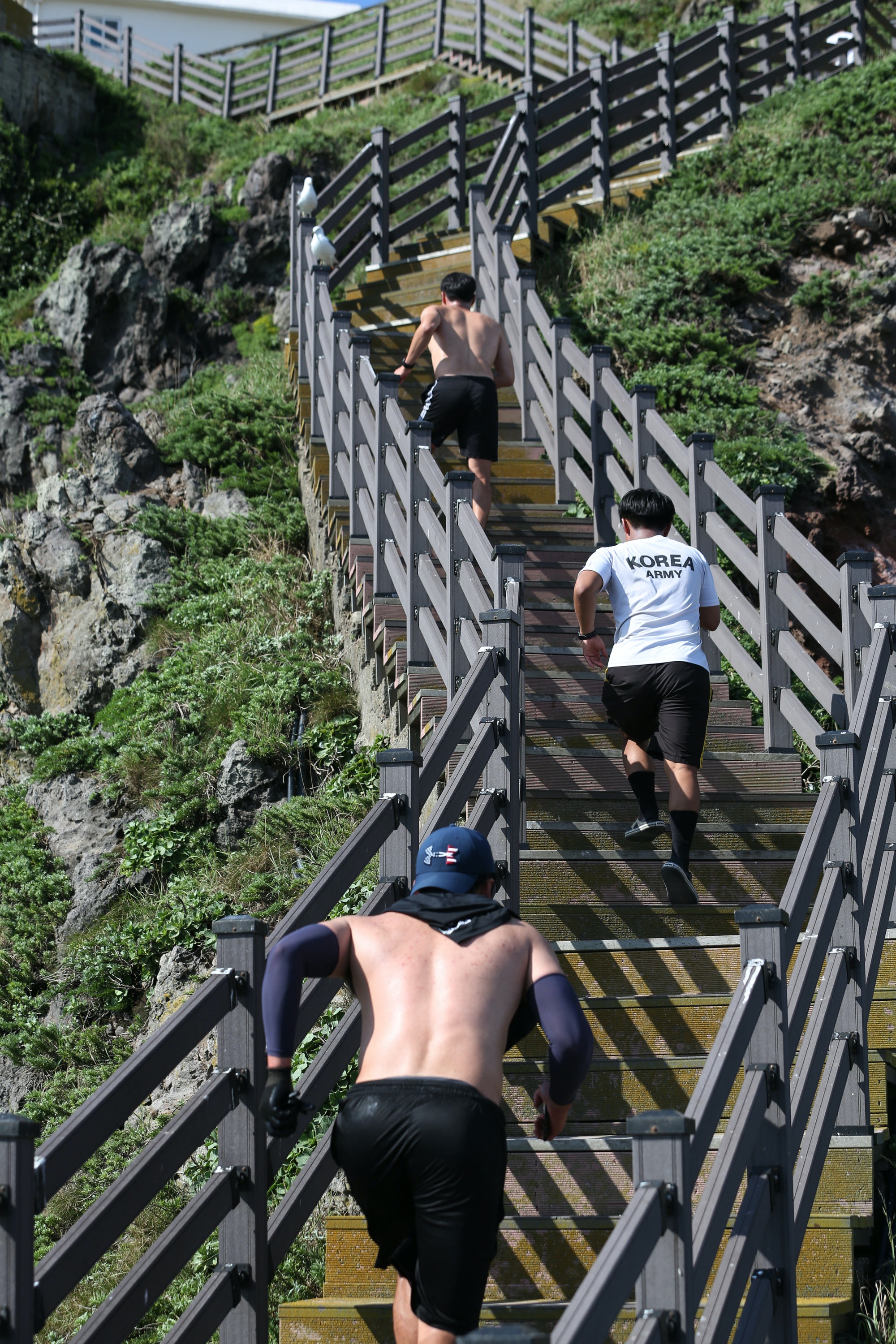
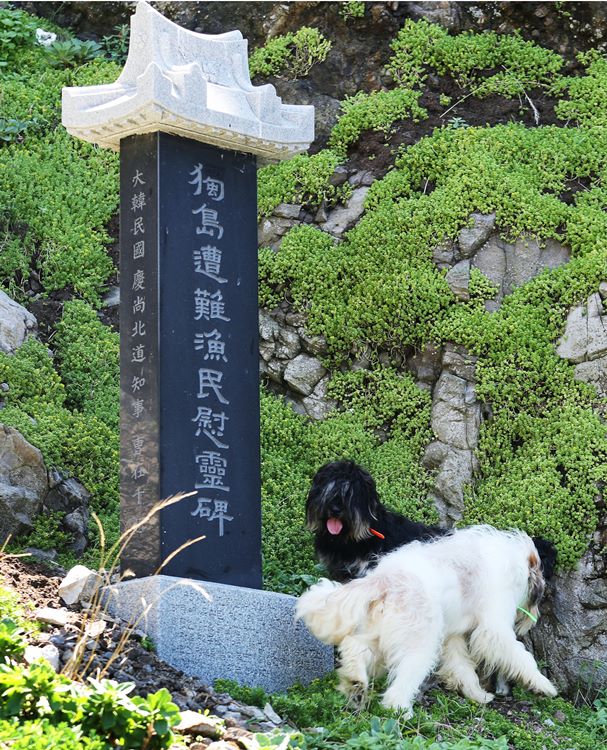
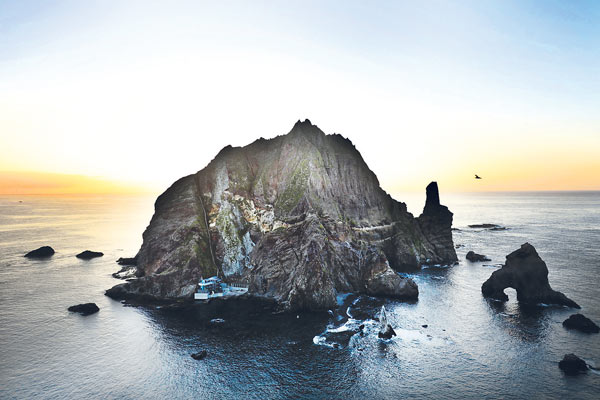
Dokdo Islands have always been the far outpost of our territory.
Located only 54 miles from Ulleungdo (Ulleung-gun county) in the East Sea, Dokdo Natural Preserve (Korea's Natural Preserve No. 336) is a group of 89 islands with two main islands -- East Island (동도), with an elevation of 98.6m, and West Island (서도), with an elevation of 168.5m -- and is currently under the protective jurisdiction of Gyeongsangbuk-do Dokdo Security Police Force.
Dokdo Islands are a "significant size under-water mountain," with the highest region rising above sea level, surrounding waters an average depth of 2,000 meters.
Dokdo and Ulleungdo began their formation from underwater volcanic activity about 4.6 million years ago, and finally surfaced above water about 2.95 million year ago, according to the Korea Institute of Ocean Science and Technology (한국해양과학기술원), based on analysis of volcanic rocks at Dokdo Islands.
According to Ulleungdo residents, upon Japan's occupation of Ulleungdo and Dokdo Islands following their victory in the Russo-Japanese War (1904 – 1905), irreplaceable trees from ancient forests, including some cedars hundreds and thousands of years old, which are highly valued for their slow growth under the harsh climate of the East Sea and famously revered for their intense fragrance when burned as incense, were chopped down along with other huge lumber trees traditionally used in building the islands' fishing boats. Top quality lumber trees were lost forever due to the careless deforestation in Ulleungdo.
In addition, Dokdo Islands had been home to the Dokdo Sea Lion (독도 강치), which were heavily hunted by the Japanese starting in the early 1900's and methodically slaughtered during the Japanese colonial period. The Sea Lions have since vanished from the islands.
The area around Dokdo Islands has always been a great fishing ground, and many fishing boats are still operating in the area day and night.
On June 8, 1948, fishing boats operating near Dokdo Islands became casualties of U.S. military bombing exercises. Officially, 16 were killed, but some claim 150-200 casualties from the U.S. bombing incident. As of yet, no official report has been made public, with many injured survivors no longer alive. There is a memorial for the deceased fishermen on the island to remember their sacrifice.
In line with Korea's reputation for IT prowess, LTE cell phone signals are strong all over the East Sea, including Dokdo Islands.
To see more Visual History of Korea:
Please visit https://www.kang.org/korea
